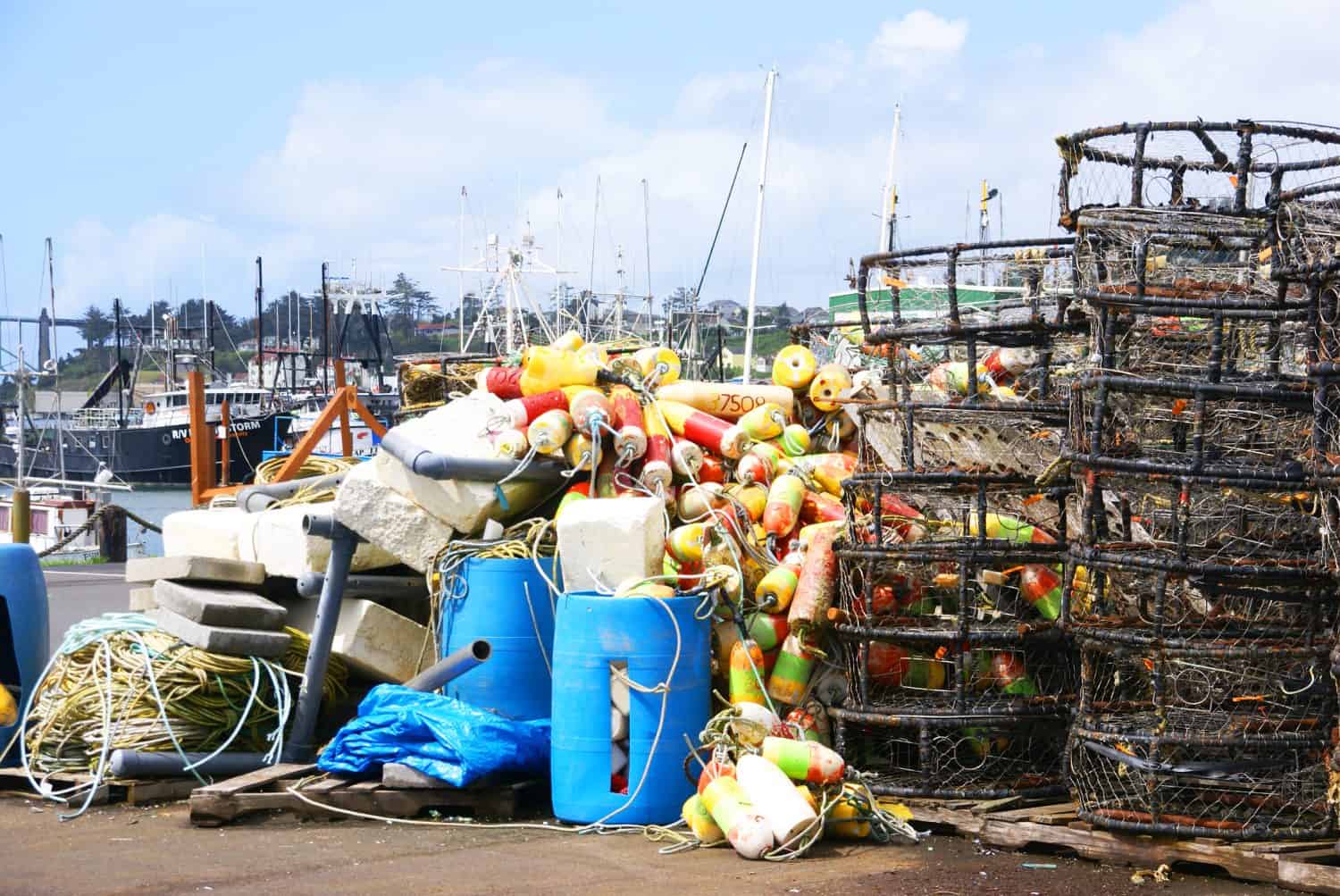Crabbing is a hobby that nearly anyone can get into. Both experts and amateurs alike enjoy this sport for a variety of reasons. Whether it be the fresh food it provides, the thrill of a good catch, or simply spending time with loved ones, this hobby offers something for everyone. As temperatures begin to rise, fishermen in Oregon begin getting their traps and tools ready for another crabbing season. However, as time goes on, rules continue to transform surrounding this hobby. Let’s explore when you can crab, how many crabs you can harvest, and other important rules surrounding crabbing in Oregon.
When Does Crabbing Season Start in Oregon?

Those vacationing in Oregon for a short period of time who wish to crab can obtain a visitor’s license.
©NKahler/Shutterstock.com
While many parts of the United States begin crabbing throughout the summer, trappers in this state can set out anywhere, anytime from December to mid-October. However, the highest quality crabs are typically caught during late August and September. According to the Oregon Department of Fish and Wildlife, “Crabbing is open in estuaries (i.e., bays), beaches, tide pools, piers and jetties year-round. Crabbing in the ocean is CLOSED for crab from Oct. 16 through Nov. 30.” However, setting out to catch crabs isn’t as simple as making sure you’re doing so during this window of time. In fact, every trapper aged 12 or older will need to have a valid license in order to catch crabs anywhere in the state. Obtaining this license is a quick and painless process, and individuals caught crabbing without one may face serious consequences.
Crabbing Bag Limits in Oregon

These rules are put in place in an effort to keep crab populations stable. Anyone caught breaking these rules may face fines or even have their equipment confiscated.
©Julie DeGuia/Shutterstock.com
There are three types of crabs that trappers can catch throughout the state of Oregon: Dungeness crabs, red rock crabs, and European green crabs. The daily bag limits and size requirements differ from one crab to another, so it’s important to educate yourself properly to stay in compliance with state guidelines. Dungeness crabs must be at least 5 3/4 inches wide, and trappers can catch no more than 12 per day. Catching female Dungeness crabs is not permissible, however, trappers can catch female red rock crabs and female European green crabs. Trappers can catch up to 35 European green crabs of any size per day while they can only take up to 24 red rock crabs of any size each day. It is important to note that trappers may not re-release any European green crabs they ensnare.
Things to Keep in Mind While Crabbing in Oregon

In addition to following all state rules and guidelines regarding crabbing, trappers should also exercise proper safety while engaging in this activity as well.
©steve estvanik/Shutterstock.com
Each trapper can have no more than three traps in the water at any given time. In addition, trap owners must clearly mark their equipment in the water so that it is identifiable. According to the Oregon Department of Fish and Wildlife, “Information must include the owner’s first and last name or business name, and at least one of the following: a) permanent address, b) phone number, c) ODFW ID number, or d) a vessel ID number. This rule does not apply when crabbing from a beach, jetty, or pier.” Before releasing traps into the water, fishermen should ensure that they are functional and up to certain standards.
Trappers should also take care to exercise safety while handling and sorting through their crabs. Inexperienced crabbers may want to wear protective equipment such as gloves when measuring their catches. The best time of the day to harvest crabs is during slack tides. After you’ve caught crabs, keeping them alive is paramount in preserving your health. Change the water they’re kept in every 5 to 15 minutes to ensure that they don’t lose oxygen. If a crab dies before it’s cooked, it may be unsafe to eat.
Before You Head Out and Start Crabbing…
Crabbing in Oregon can be a fun and rewarding pastime for many people. However, it’s important to not get swept away in all the excitement. Following the regulations is of the utmost importance, as it helps crab populations stay stable so that fishermen can enjoy this sport for many years to come. As long as you stay in compliance with the rules that the Oregon Department of Fish and Wildlife has set, you have nothing to worry about. Go out and crab to your heart’s content!
The photo featured at the top of this post is © NKahler/Shutterstock.com
Thank you for reading! Have some feedback for us? Contact the AZ Animals editorial team.






